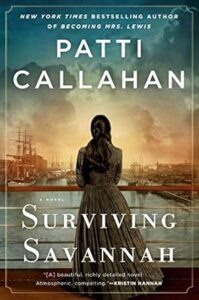Date: 25 May 2025
Location: John & Marion
There was a good turnout for our discussion at John and Marion’s, with only Linda D, Joyce, Claudia, and Gary and Peggy missing. Most had read the book and from the discussion, most enjoyed it.
This is classified as a historical novel about a real event, the explosion of a boiler onboard the Steamship Pulaski and its subsequent sinking with a great loss of life. It was a double paddle wheel ship with twin masts and was believed to be one of the safest ships afloat. It sailed from Savannah on June 13, 1838, with an overnight stop in Charleston and then another night at sea before reaching Baltimore – that was the plan. But, after picking up more passengers in Charleston and spending the night there, on June 14, 1838, off the shore of North Carolina, one of the boilers exploded and the ship broke up and sunk 45 minutes later. This book was well researched and contains what is known about the people onboard and the sinking of the Pulaski.
The story is told through the eyes of the characters in the book and actually includes two disasters; the explosion and sinking is one, and the other is the death of a very close friend of Dr. Everly Winthrop, and fiancee of Oliver Samford, Mora Dunmore. Everly believes that she is responsible for her friend’s death and her feelings for Oliver complicate the matter even more. The narration switches back and forth between the present day and June, 1838, following how people cope with there own disasters. The Steamship Pulaski is what ties the two stories together. After a salvage operation finds the Pulaski remains and begins to bring up pieces of the ship and possessions of the passengers, Everly is convinced by Oliver (manager of the Rivers and Seas Museum in Savannah) that she is the only one that can properly curate an exhibit on the Pulaski.
The curation of the exhibit is the main story line of the book. It is difficult in the beginning, because not much was know about who was aboard and who survived but as Everly follows leads, the story of the people who survived, and how, is gradually revealed. Along the way, Mora’s connection with the survivors is uncovered.
There were several passages that stayed with me:
“The idea that surviving brings everyone to a new and better place is a lie told by people who need the world to make sense.”
“Doesn’t writing these cards make you think of how someone might sum up your life?” This made me think about how different people might summarize my life and would my own summery look like any that others might write.
“Now what?” This question applied not only to the survivors of the disaster and how they went on with their lives but to Everly herself, who has to decide how to carry on with her life now that the exhibit work is completed. Read the book if you want to find out.
During our discussion of this book, there was a question about the title of the book and why was it not Surviving Pulaski? I believe a case can be made that the title makes reference to Everly and her struggle to survive the events that took place in Savannah, related to Mora and Oliver.
— Reynolds
